Best surround sound systems 2025: home cinema speakers and soundbars put to the test
The perfect home theatre solutions for every budget and space
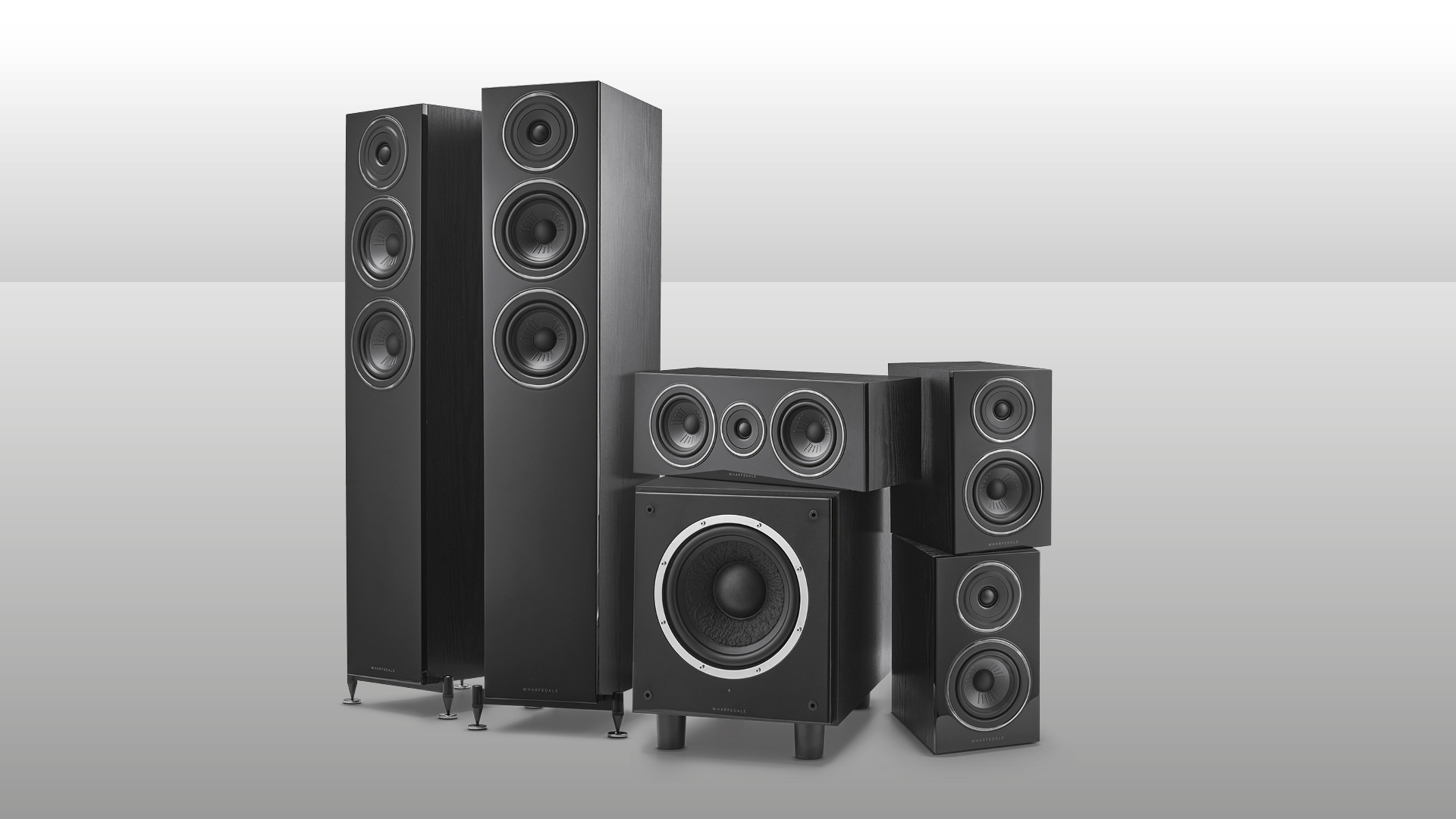
You can have the biggest and best TV in your living room, but if the audio isn’t as good as the picture your experience will always be lacking; so you need to make sure not to neglect your sound system.
That essentially gives you two options: either a full surround system made up of separate speakers, or one of the best soundbars – and we have plenty of recommendations for both below.
In many ways the best option for you is the one that suits your space. Not everybody has the room (or the inclination) to trail wires all over the place in order to accommodate a full 5.1 system, but that is certainly the best way to experience a movie soundtrack.
For those with less space, a soundbar makes more sense. While a soundbar might not be able to match a full surround system for immersion, the emergence of Dolby Atmos means it can at least get close, particularly if you feed it one of the best Dolby Atmos movie scenes.
There is also a third way that might be worth considering, with powered wireless speaker packages giving you the genuine separation offered by traditional 5.1 packages but without the need for a full-size amplifier.
Whichever one you think might be right for you, we have recommendations for all budgets below, with each one thoroughly tested by our team of experts. All of our surround sound system reviews are carried out in our custom-built home cinema testing facilities, but you can read in more detail how we test surround sound systems at the bottom of this page.
The quick list
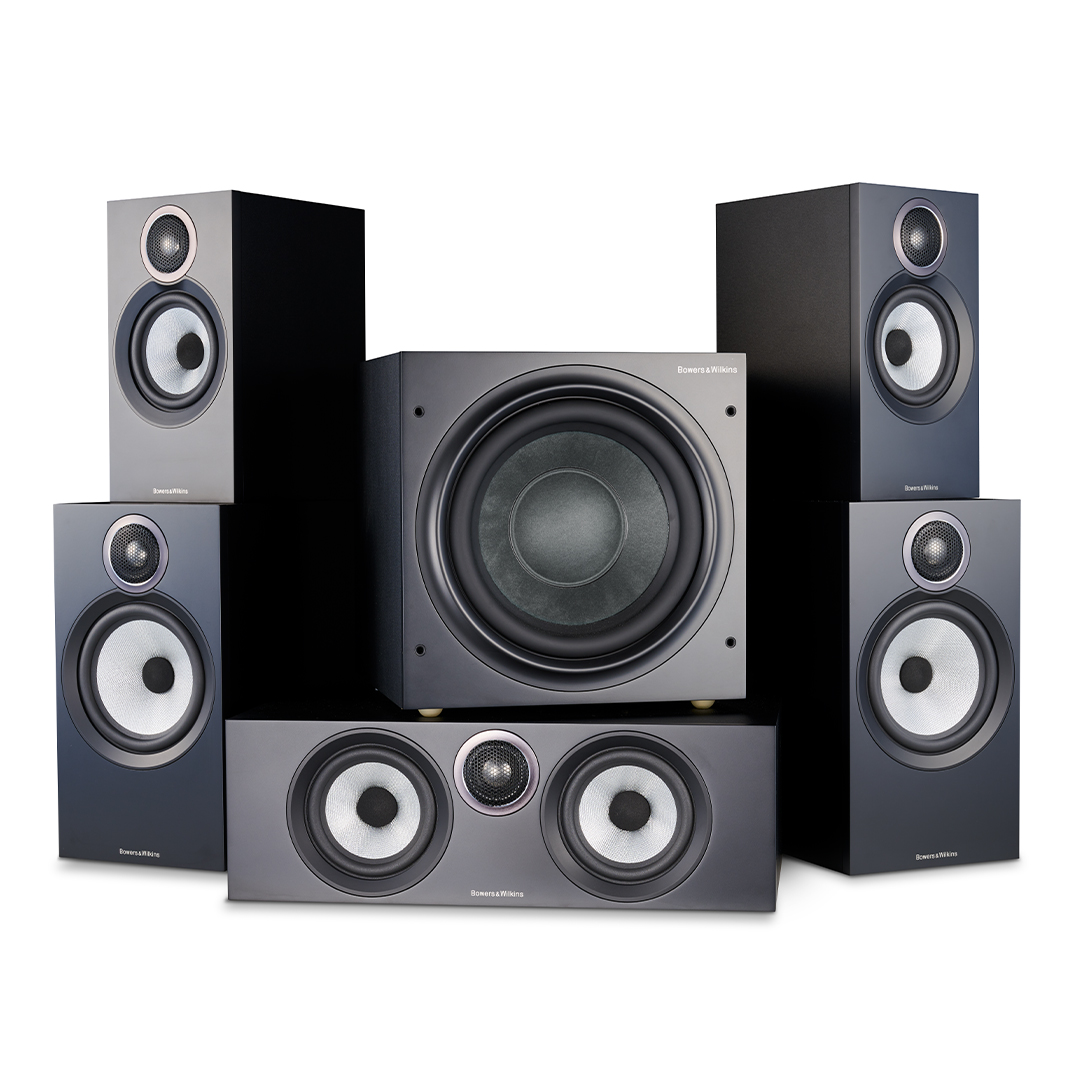
Best speaker package
Bowers & Wilkins makes an incredibly strong case for ditching floorstanding speakers with this stunning speaker package.
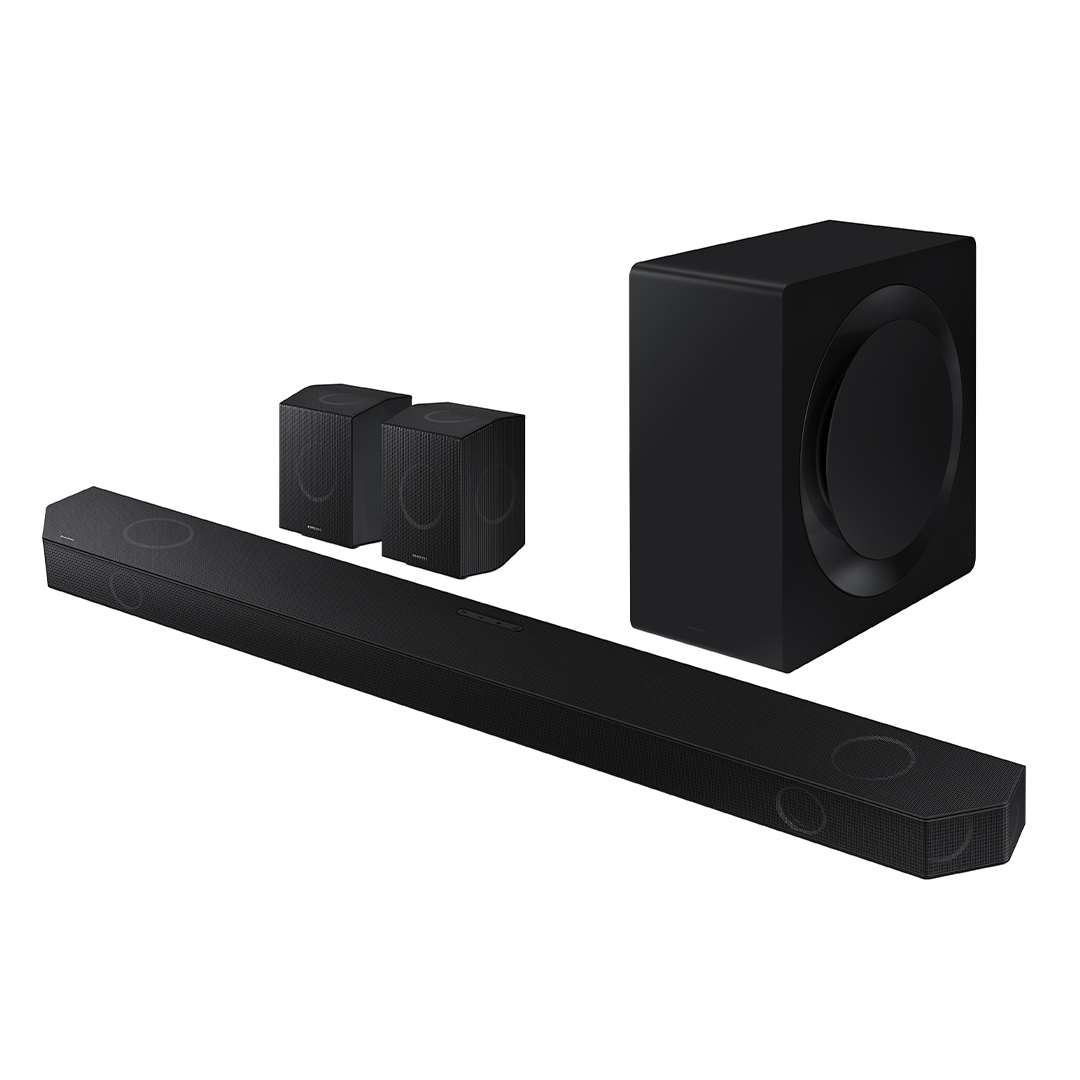
Best soundbar system
Samsung delivers a truly impressive surround sound system with a quality soundbar at its heart
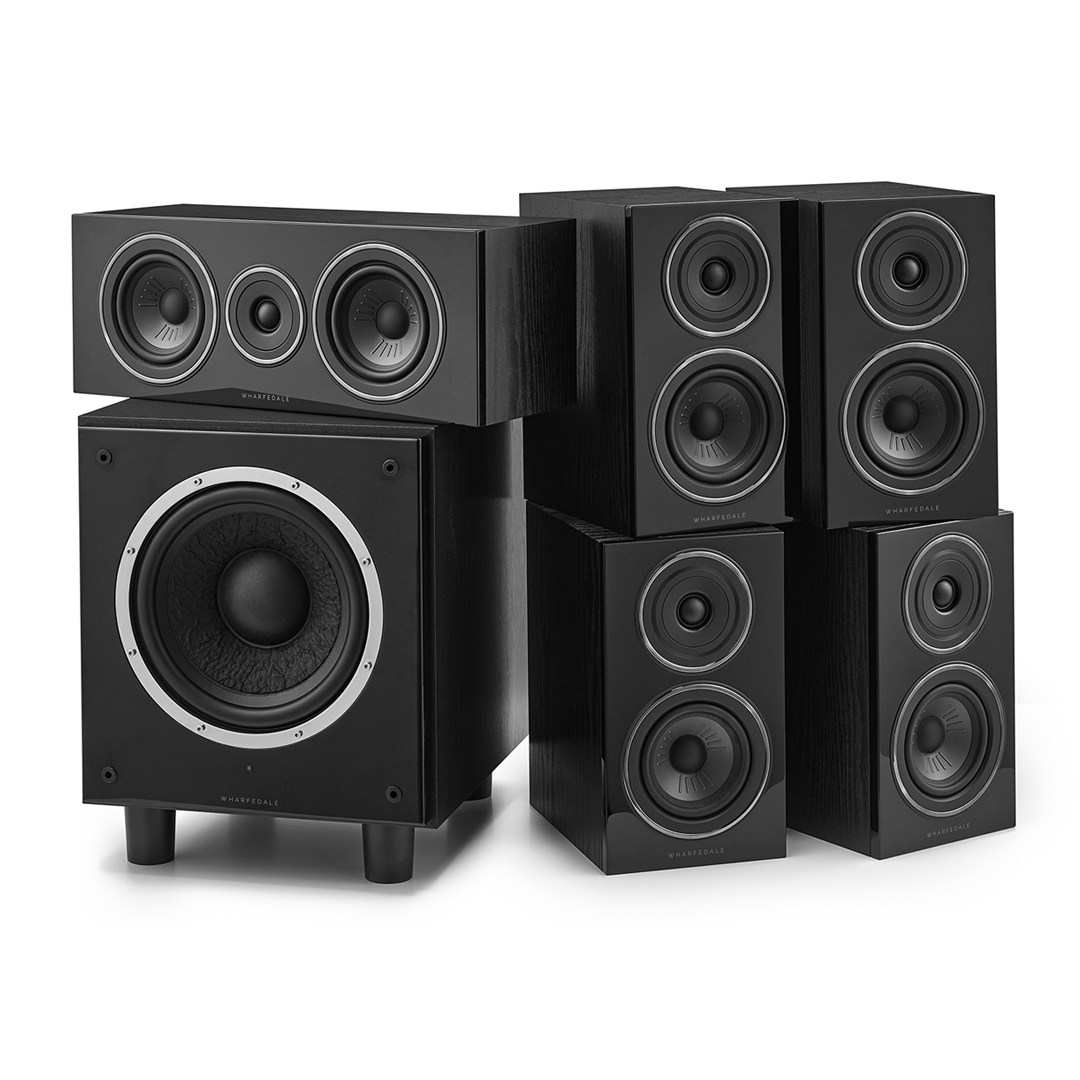
Best affordable speaker package
The Wharfedale 12.1 HCP is a mature yet affordable surround sound system.
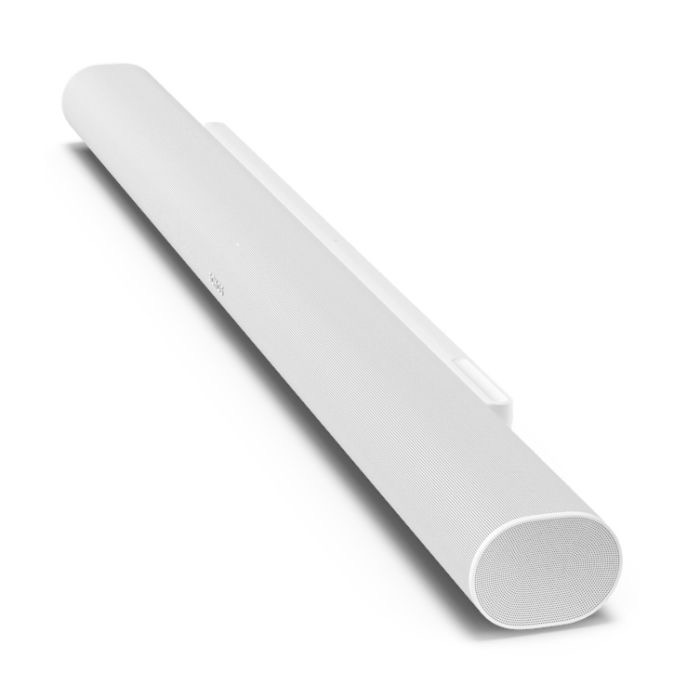
The original Sonos Arc was Award-winningly good, but this upgraded version improves on it in multiple ways, making it the ultimate one-box TV sound system.
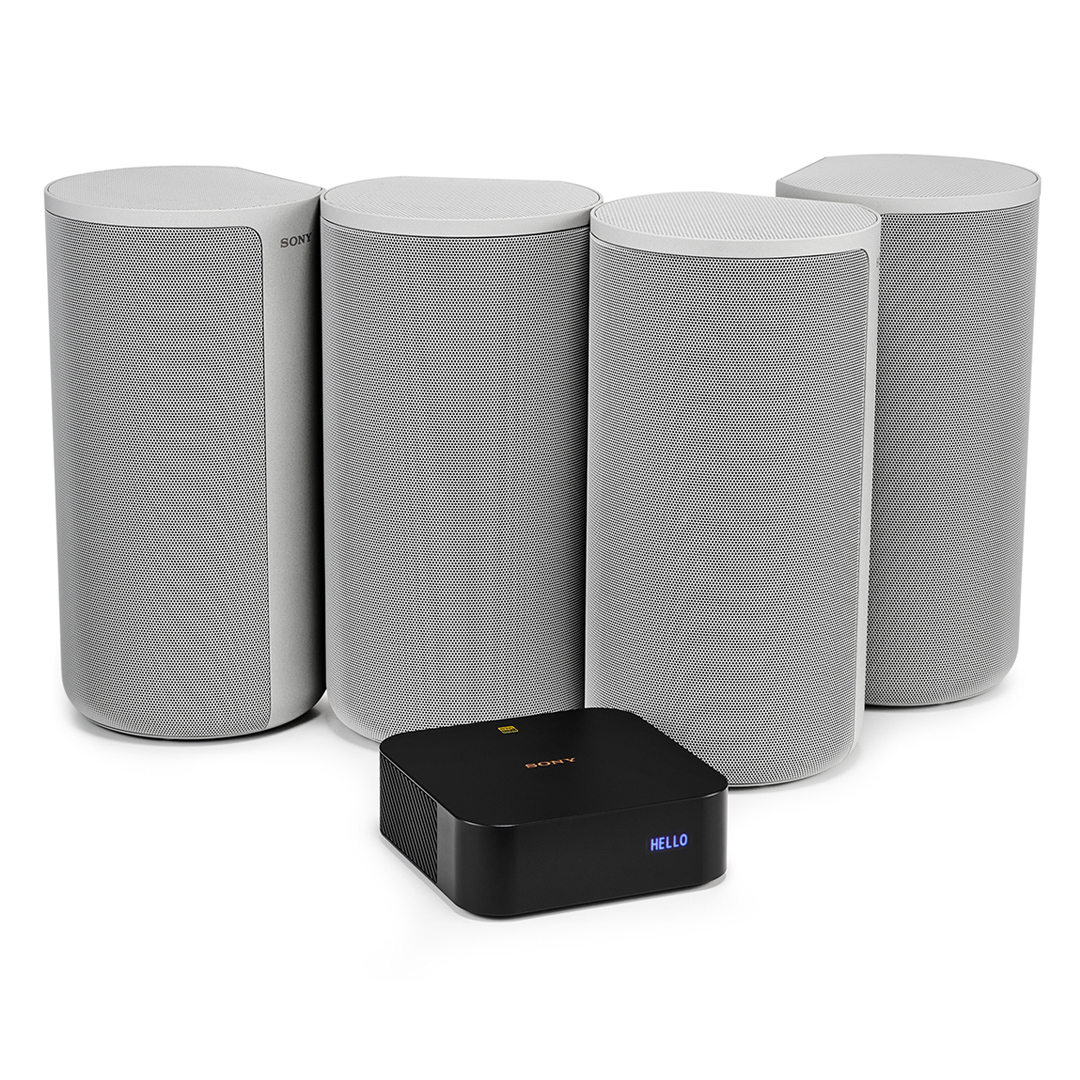
Best wireless speaker system
Sony’s A9 speaker system redefines accessible home cinema sound with an innovative, immersive and flexible solution.
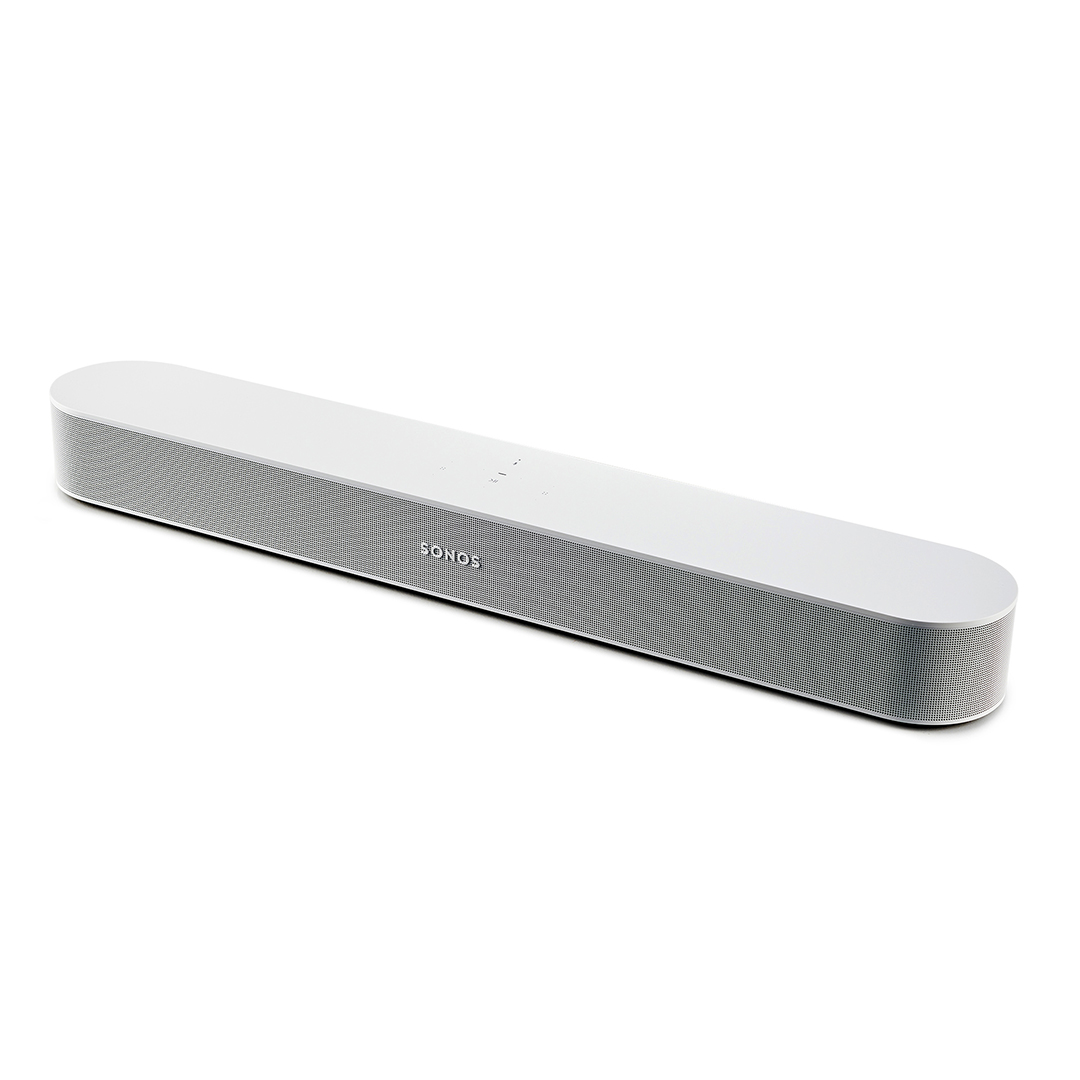
Best cheap soundbar
The well-priced Beam Gen 2 delivers with a mature and polished sound and effective virtual Dolby Atmos performance.
Load the next product ↓
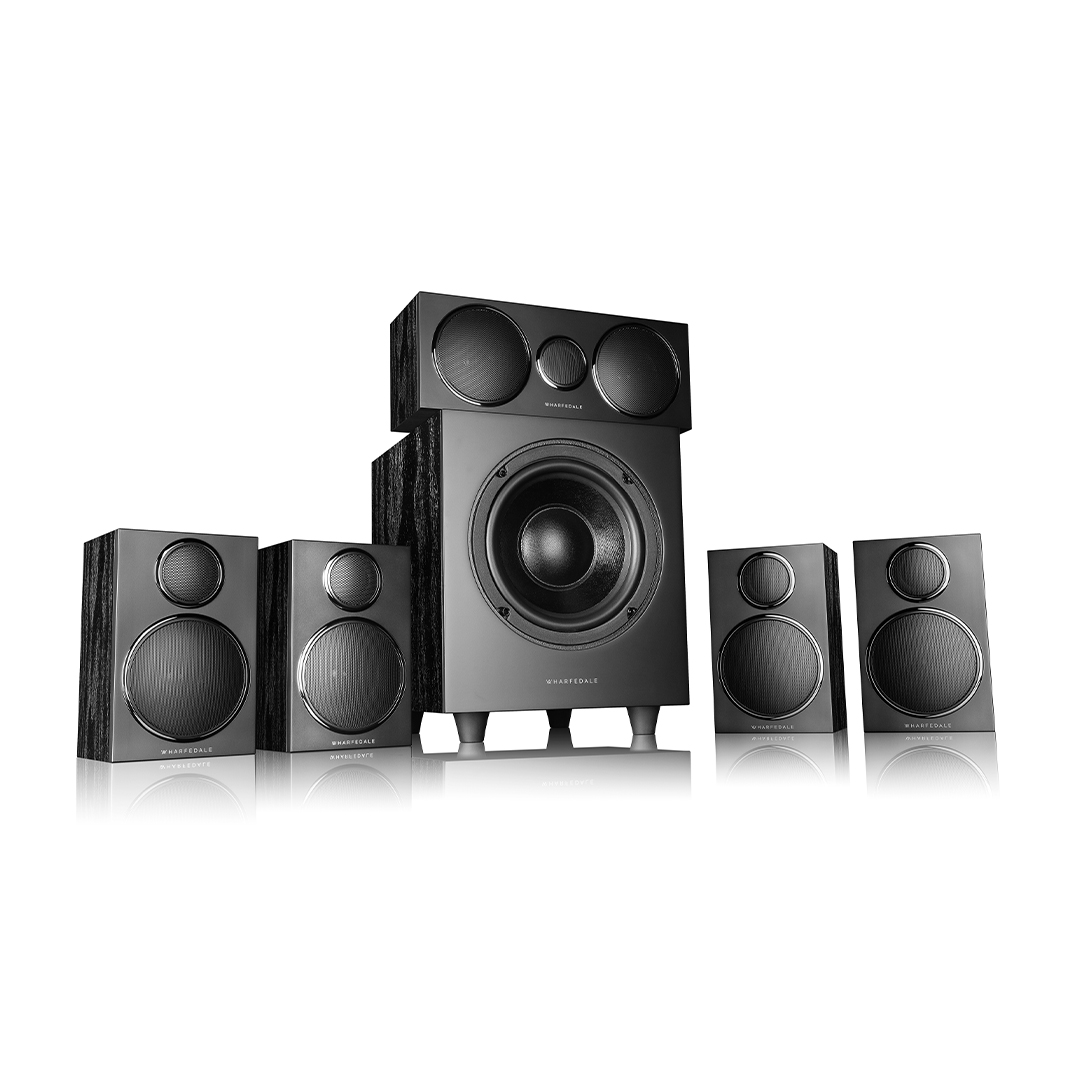
Best compact speaker package
The DX-3 HCP might look unimposing, but its punchy and broad sound is impressive for both its size and price.

As one of What Hi-Fi?’s main home cinema testers I know how important decent audio is if you want the best experience possible. Whether you’re watching regular TV, movies, sports or playing games, a proper, well set-up surround system can truly take immersion and your enjoyment levels up a notch. The tricky part is finding the right one for your specific needs, budget and space. To help with that, I and the What Hi-Fi? team make sure to keep a constant stream of surround sound systems covering every budget passing through our test rooms – the best of which make it into this list!
The best speaker package




Specifications
Reasons to buy
Reasons to avoid
It is an indisputable fact that the best way to achieve the most convincing surround-sound experience is by placing individual speakers all around your room. Usually that would consist of a ready-made home cinema pack (HCP) put together by the manufacturer, but there’s nothing to stop you creating your own, as long as you include all the necessary components.
B&W itself doesn’t sell this particular setup as a bundle; but multiple retailers do. It consists of a pair of 606 S3 speakers for the left and right channels, a couple of 607 S3 speakers for the surrounds, an HTM6 S3 for the centre channel, and a ASW610 subwoofer. Don’t forget you’ll also need stands for the front and surround speakers.
Why this exact combination? Because all of the components are compact and well crafted, and collectively they deliver a spectacular performance. The sound is brilliantly dynamic and energetic, but also detailed and insightful, with excellent warmth and richness to the vocals. It can’t match the sonic scale of physically larger packages, but it’s still full-bodied and engaging.
It shouldn’t really come as a surprise that combining these five-star speakers would be so successful, but it’s still impressive just how well this DIY surround-sound package works.
Read the full Bowers & Wilkins 606 & 607 S3 speaker package review

When buying a surround sound system, you need to factor in the space you’re putting it in. The team and I all love a proper Atmos system with speakers galore, including ceiling firing units. But the fact is not everyone has the space for that. This is why we often view a 5.1 system as a happy medium between that and a basic soundbar. A good 5.1 system, such as the Bowers & Wilkins 606 and 607 S3 speaker package, delivers all the heft you need for a properly immersive home cinema experience without taking up too much space. Just remember you’ll still need to plan appropriate placement and spacing when setting it up and factor in the cost of speaker stands on a system like this.
The best soundbar system






Specifications
Reasons to buy
Reasons to avoid
If a full AVR and speaker system doesn't work for you, fret not. Samsung's impressive soundbar system delivers excellent cinematic surround sound without the need to trail cables around your living room. We called the HW-Q990D a "complete Dolby Atmos sound system in a box" thanks to its plug-and-play nature and sensational audio quality, which means it has rightfully earned itself a spot on this list among the fully fledged systems from the likes of Wharfedale and Bowers & Wilkins.
This system comprises a Dolby Atmos soundbar, two wireless satellite surround speakers (complete with upward-firing Dolby Atmos speakers) and a wireless subwoofer. Setting up this system is a breeze thanks to the fact you only need a power cable for each component (and an HDMI-lead for the soundbar, of course), and Samsung's intelligent SpaceFit automatic calibration system is constantly running to best adapt the sound to your room and speaker placement.
Speaking of sound, Samsung has improved upon this system's already admirable predecessor, with a spacious yet controlled sound that is packed with detail and excellent vocal clarity. The HW-Q990D is a dab hand at replicating spatial audio, with height and placement of sounds given a great amount of attention from the bar and surrounds alike. There is also an excellent sense of cohesion between the components of this system, with the soundbar and surrounds blending together in an organic fashion to create a consistent bubble of sound.
The dedicated subwoofer also plays a key role in providing a hearty amount of low-end, and while we have heard better soundbar subs before, the Samsung does an admirable job of providing bass to boost tension and add weight to tricky scores such as that of Blade Runner 2049's Chapter 2 sequence.
Read the full Samsung HW-Q990D review
The best affordable speaker package




Specifications
Reasons to buy
Reasons to avoid
With poise, effortlessness, cut-glass diction and charisma, the Wharfedale Diamond 12.1 HCP is essentially the Audrey Hepburn of home theatre speaker packages.
The package is made up of a quartet of the excellent, mid-sized Diamond 12.1 bookshelf speakers for fronts and surrounds with the 12.C in the middle and the SW10 powered subwoofer supplying the bass.
The SW-10 sub is in some ways the star of the show: taut and dextrous, it is exceptionally musical and blends seamlessly with the system's speakers, thanks in no small part to they themselves having an impressive low end. The result is a rich and lively sound.
The SW10 delivers rich bass, but it never overpowers the midrange or treble. And, as a whole, the system sounds mature, impactful, agile and detailed.
The Diamond 12.1 system is an excellent choice for both music and film, and its combination of cinematic scale, relatively small physical dimensions and affordable price make it ideal for people who might otherwise not have considered a 'proper' home cinema setup.
For an appropriate AVR, we suggest trying the Denon AVR-X2800H. If we had to use one word to describe the sound of this receiver, it would be ‘confident’. The AVR-X2700H doesn’t try too hard to impress, as a nervously underpowered budget amp might.
It’s an easy and effective listen. No matter how hectic the action becomes, this Denon never misses a beat. It passes the laser blasts from speaker to speaker in a wonderfully coherent manner and, no matter the scene, creates a genuine sense of place.
Read the full Wharfedale Diamond 12.1 HCP review
The best soundbar




Specifications
Reasons to buy
Reasons to avoid
If your idea of a soundbar doesn’t include any extraneous speakers like you get with the Samsung HW-Q990D (above), the Sonos Arc Ultra should be at the top of your shopping list.
We already loved the five-star, Award-winning Sonos Arc, so the idea of an improved version was very appealing, and the Ultra doesn’t disappoint. To the naked eye it looks identical to its predecessor, but the new model is a touch wider and not quite as tall. It still measures 114cm from end to end, though, so it’s best-suited to bigger TVs.
The big differences come underneath the grille, with seven tweeters, six midrange woofers, and a 'Sound Motion' woofer all combining to create a 9.1.4-channel configuration powered by 15 Class D amplifiers. That’s a notable upgrade from the original.
The result is a noticeable improvement in the way it handles bass, with a great combination of weight and control, but that’s just the beginning of its talents. The way it places particular sounds around you is particularly impressive, with loads of detail and dynamism.
For such a technologically impressive soundbar, though, there are some disappointments. While the setup experience and TruePlay customisation are slick the app itself isn't great, although it’s hardly something you’ll feel the need to use every day. The lack of extra HDMI inputs might also be frustrating if the TV you're planning to plug it into doesn’t have many.
Those minor quibbles aside, the Sonos Arc Ultra is certainly a soundbar that lives up to its name.
Read the full Sonos Arc Ultra review

If you change your mind at a later date and want to add some extra bass and a couple of satellite speakers to your Arc Ultra setup, it’s possible to create what Sonos calls the 'Ultimate Immersive Set’ by adding a Sonos Sub and a couple of the Atmos-capable Era 300 speakers, but be aware that doing so will get pretty expensive.
The best wireless speaker system






Specifications
Reasons to buy
Reasons to avoid
Sony’s HT-A9 Wireless Home Theatre System encourages users to position its speakers arbitrarily, promising an even, uniform and immersive soundfield regardless of the symmetry of your set-up.
How does it achieve this wizardry? The HT-A9 supports Sony's 360 Spatial Sound Mapping which calibrates your room's height size and combines it with speaker distance and relative location. The aim is to create an Atmos-like dome of sound from 12 ‘phantom’ speakers notionally placed around that audio bubble.
Talk of phantom channels and sound bubbles often elicits a raised eyebrow from the likes of us, but there's no denying the effectiveness of the HT-A9's delivery. It makes for a refined precision and texture that is more immersive than any soundbar package we have tried. No matter how haphazard our speaker positions, the sound design never feels off-kilter or detracts from the action on-screen and that makes the HT-A9 an excellent choice for people not prepared to sacrifice their furniture arrangement at the altar of surround sound.
If you want more punch, you can add a choice of two optional subwoofers, the 300W SA-SW5 priced at £699 / $700 / AU$899, and the 200W SA-SW3 costing £449 / $400 / AU$599.
It might not have the same fidelity and transparency we would expect from a traditional speaker package but it's an excellent compromise between performance and practicality. This is a system that we expect to appeal to many.
It's worth mentioning that Sony has released the sequel to this system, though we find the HT-A9 to be the better option of the two. The Bravia Theatre Quad package is still an excellent system, though it loses a star for being notably more expensive than the HT-A9 and also lacking in low-end weight, to the extent that we feel the optional subwoofer is more of a necessity, therefore making the system even more expensive.
Read the full Sony HT-A9 review
The best cheap soundbar




Specifications
Reasons to buy
Reasons to avoid
Delivering Dolby Atmos from a small chassis is no mean feat yet the Sonos Beam Gen 2 achieves a convincing, immersive performance without so much as a vertical speaker in sight. Instead, when watching Atmos content, two of the soundbar's five front-facing arrays are dedicated to reproducing overhead and surround sounds. The soundbar then deploys its significant processing power to give the impression of height using psychoacoustic HRTF (head-related transfer function) technology.
While genuine overhead sounds are perhaps a stretch too far for this petite performer, its virtual delivery of the Atmos format outstrips any similarly priced soundbar and even a few that are more expensive. All told, the Beam Gen 2 delivers a spacious, enveloping soundscape that is full of detail and features three-dimensional effects with tangible motion.
Want an even more impressive soundstage? You can add two One SL rear speakers (£358 / $358 / AU$538) and a Sub (£699 / $699 / AU$999) for a more traditional surround set-up.
Not that many soundbars at this price point come with networking capabilities, but this being a Sonos product, the Beam Gen 2’s ability to integrate into a wireless multiroom system is fundamental to its design. This means you can stream to the Beam Gen 2 from a handheld device using Apple AirPlay 2, and Spotify Connect is built-in too. It also supports Amazon Music Ultra HD audio, which gives you access to lossless 24-bit/48kHz tracks as well as Dolby Atmos Music.
Despite the lack of upward drivers, if space and budget are limited there isn't a better Dolby Atmos soundbar that we would recommend.
Read the full Sonos Beam Gen 2 review
The best compact speaker package








Specifications
Reasons to buy
Reasons to avoid
If you’re in the market for something more substantial than a soundbar but don’t have space to scatter speakers the size of wheelie bins around the place, Wharfedale’s DX-3 home cinema pack is right up your street.
The successor to the What Hi-Fi? Award-winning DX-2, this pint-sized package is perfect for smaller rooms, with the two-way closed-box design of the surround speakers meaning they can be placed close to a wall, while the centre channel will sit comfortably under the TV. The 70W subwoofer is relatively petite, too.
The diminutive dimensions of each component might suggest you’re going to get a small-scale sound from the DX-3, but it’s pleasingly cinematic, with punchy dynamics and plenty of detail. It doesn’t sound quite as rich or warm as its predecessor, but with the right amplifier that can probably be rectified.
It might not look or feel quite as premium as the DX-2 package did, and the RRP is £50 more expensive, but this is still a very affordable and hugely practical way to graduate from a soundbar setup.
Read the full Wharfedale DX-3 review
Also consider
- Q Acoustics 5040 5.1 Home Cinema: If you have space for floorstanders and want a 5.1 system that isn’t astronomically expensive, then the What Hi-Fi? Award-winning Q Acoustics 5040 5.1 package is a solid choice. Our only minor quibble is that some of the others systems on this list deliver a more full-bodied sound.
- Dali Oberon 5 5.1: The What Hi-Fi? Award-winning Dali Oberon 5 5.1 speaker package is a great surround system that delivers unparalleled performance. If you have money to spare and the space for it, it’s an excellent option well worth considering.
- Wharfedale Evo 4.4 5.1: If money is no object then the Wharfdale Evo 4.4 5.1 speaker package is well worth a look. During our checks, it delivered brilliant, dynamic sound with great rhythmic precision. Just be warned, if space is tight, the central channel is outright huge.
- Sonos Arc: If you don’t have space for a speaker package, but want a great surround-sound experience from a soundbar instead, and don’t fancy the Sony HT-A7000, then the Sonos Arc should be your next port of call. It offers some of the best audio you’ll find on a soundbar and comes with the added flexibility of the Sonos ecosystem, which makes it easy to pair it with some of the brand’s other speakers and subwoofer.
- Sony HT-SF150: The cheapest product on our main list won't leave you much change from £450, but if you're working with a more limited budget, or you just want something to boost the sound of a second TV, this sub-£100 Sony is the definition of cheap and cheerful.
How to choose the best surround sound system for you
Speakers or soundbar?
The first big question is whether to go for a speaker package or a soundbar. It really depends on how much space you have for a system.
A speaker package will give you true surround sound, as the speakers will be placed all around you in a 360-degree arrangement. But a full surround sound system means more boxes in your room, and you will also need an AV receiver to make the speakers work (unless you choose a wireless system such as Sony's HT-A9).
For most homes, a soundbar may well be the best option. It's a simpler, more elegant solution, as it combines speakers and amplification in a more discreet package.
There are soundbar packages that come with wireless surrounds and a subwoofer. These are smaller and easier to position than full-size speakers, but will still need to be placed near a power outlet.
Budget
Working out how much money you are willing to spend might seem like a very obvious thing to do, but bear in mind that a surround sound speaker package needs a separate amplifier to work, so factor that into your budget as well. If you already have one, is it suitable for the speakers you have in mind?
Dolby Atmos performance
Dolby Atmos is the pinnacle of home cinema surround sound right now and there are plenty of soundbars out there that are able to decode an Atmos signal. For the most believable sense of height, though, you will need a full speaker package with drivers that physically point upwards to bounce sound off your ceiling. (Even better, speakers actually installed above you, although that’s a pipe dream for most people.)
It’s true that the best soundbars are capable of some very clever tricks that fool our ears into thinking sound is coming from places it’s not, but there is still no substitute for the real thing. If you want the best Atmos performance, you’ll have to sacrifice some convenience and go for the full speaker package.
Connectivity
To make use of a surround sound speaker package you’ll need a home cinema amplifier (aka an AV receiver), which will work as the hub for all your other kit. A soundbar will connect directly to your TV either by HDMI or optical cable, so make sure yours is equipped with the necessary ports for the product you have in mind.
If your TV is a few years old you might also want to pick a soundbar that will enhance your system with streaming options such as Apple’s AirPlay 2 or Chromecast – while some also offer access to voice assistants such as Amazon Alexa. While these aren’t crucial for their home cinema functionality, they can come in very handy for controlling other smart home kit in your house.
Whichever surround sound system you consider, do your research and make sure it will fit your space and accommodate your games console, 4K Blu-ray player, set-top box, and whatever else you're planning on hooking up. Happy listening!
How we test
We test surround systems using a set methodology focused on direct comparisons and real-world listening.
Specifically, all surround sound systems are tested in our dedicated home cinema room in London. The room is acoustically treated and has been measured and marked to accommodate multiple configurations, including 5.1 and 7.2, as well as Atmos set-ups.
When testing we ensure we directly compare the home theatre surround sound system with any rival or alternative products we think the reader would also be considering.
We will swap in and out the systems as we run each test so we can make direct performance comparisons. Our reviewers never rely on memory when comparing performance. The speakers will also be run with our room’s reference Arcam AVR31 AVR.
When testing the surround sound system we run a variety of checks using a selection of test discs and streaming services to gauge various aspects of its performance. The specific movies and tracks we use are constantly updated to reflect current trends.
For example, if we want to check that a system can handle low-end frequencies without distorting we’ll use a scene such as the iconic car chase in The Batman, or the second scene of BladeRunner 2049, which features an incredibly powerful pounding low end that many systems struggle to deal with. We’ll also check how the system deals with specific audio formats, such as Dolby True HD, Atmos and Digital Plus, where applicable.
Though surround sound systems are generally focused on movies, we will see how they handle music and will stream tracks covering a variety of genres during our review. Here again, we make direct comparisons with rivals using the same comparative testing methodology we do for films.
In every review, we make sure at least two people have tested the surround sound system to make sure the findings are never based on a single person’s opinion. This helps us to ensure that we never let unintended bias creep into our reviews.
Recent updates
5/3/25: Added the Sonos Arc Ultra as the best soundbar option, and the Sony HT-SF150 to the also consider section. Also rewrote the intro and made the section on how to choose clearer.
22/03/24: Added new intro, author block, top tips, also consider section and how we test synopsis.
Surround sound systems FAQ
What do the numbers mean with surround sound systems?
The numbers next to a surround sound system refer to how many channels it has. The first number refers to the number of speakers, the second how many subwoofers while the third details how many height speakers there are. For example, the most common 5.1 speaker packages will have five speakers and one subwoofer; 5.1.2 Atmos systems add two “height” speakers to the mix, which is how they create the “dome of sound” experience.
Do more speakers mean better audio?
Based on our experience reviewing surround sound systems, the answer is a firm no. A 7.2 system will not automatically be a better performer than a 5.1 set-up. Audio quality is defined by more specific factors, including the speakers’ engineering, sonic character (if they have been matched correctly) and general quality. That’s why you need to check reviews of the specific packages or products in question even after deciding the configuration you want.
Can a soundbar provide surround sound?
Lots of soundbars are currently being marketed as offering “proper surround sound”. There are plenty that go so far as to promise Atmos. In our experience, although there are plenty of soundbars that can replicate the experience to a degree, they cannot fully match the performance you get from a good, proper speaker package.
How do you place surround sound systems?
Surround sound systems, like all speakers, need a certain amount of space to work. On top of that, if you have opted for a surround sound package you need to place the speakers and subwoofer at specific locations to let them accurately deliver movie audio as the director intended. For obvious reasons, you won’t get proper surround sound if you place the rear channels in front of you, for example.
Get the What Hi-Fi? Newsletter
The latest hi-fi, home cinema and tech news, reviews, buying advice and deals, direct to your inbox.
Lewis Empson is a Senior Staff Writer on What Hi-Fi?. He was previously Gaming and Digital editor for Cardiff University's 'Quench Magazine', Lewis graduated in 2021 and has since worked on a selection of lifestyle magazines and regional newspapers. Outside of work, he enjoys gaming, gigs and regular cinema trips.
- Tom Wiggins
- Alastair StevensonEditor in Chief